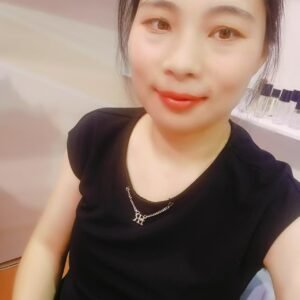The cosmetic glass bottle market is experiencing significant growth, driven by rising consumer demand for sustainable, premium packaging and the expanding global beauty industry. As brands shift towards eco-friendly solutions, glass bottles have become a preferred choice for their recyclability, aesthetic appeal, and product integrity preservation.
In this blog post, we’ll explore the latest trends, market forecasts, key players, and regional insights shaping the 2025 cosmetic glass bottle industry.
Market Overview: Growth Projections & Key Statistics
The global cosmetic glass bottle market was valued at 6.12 billion in 2022 and is projected to reach 10.01 billion by 2030, growing at a CAGR of 6.4% from 2024 to 2030.
Key Market Drivers
- Sustainability & Eco-Conscious Consumers
- With increasing awareness of plastic pollution, 73% of millennials are willing to pay more for sustainable packaging.
- Glass is 100% recyclable, making it a top choice for brands aiming for zero-waste initiatives.
- Premiumization & Luxury Appeal
- High-end beauty brands (e.g., Dior, Chanel) use glass bottles to enhance perceived product value.
- The perfume segment is a major contributor, with glass bottles accounting for 25% of the market.
- Rising Demand in Skincare & Essential Oils
- Skincare products dominate the market (35% share), followed by perfumes (25%) and haircare (20%)5.
- Essential oils are the fastest-growing segment, driven by organic beauty trends.
Top Trends Shaping the Market in 2025
1. Lightweight & Recycled Glass Innovations
Manufacturers are developing lighter glass bottles to reduce shipping costs while maintaining durability. Some brands use up to 50% recycled glass to meet sustainability goals.
2. Customization & Unique Designs
- Etched, printed, and coated glass bottles are trending for brand differentiation.
- Hand-blown artisanal glass (e.g., Kindred Black’s luxury bottles) is gaining popularity in niche markets4.
3. Asia-Pacific Leads Market Growth
- China, Japan, and South Korea are the biggest consumers, with 38% of global market share.
- Rising middle-class spending and K-beauty trends fuel demand for high-quality packaging.
4. Regulatory Push Against Plastic
- EU and U.S. bans on single-use plastics are accelerating glass adoption.
- Brands like L’Occitane and The Body Shop now offer refillable glass containers.
Key Players & Competitive Landscape
The market is moderately concentrated, with top manufacturers including:
- Heinz-Glas (Germany) – Leading in perfume & luxury glass bottles.
- Gerresheimer (Germany) – Specializes in high-end skincare packaging.
- Piramal Glass (India) – Strong presence in emerging markets.
- Saver Glass (France) – Known for custom-designed cosmetic bottles.
Top 3 companies hold ~35% market share, with Europe being the largest producer (30% share).
Regional Market Insights
| Region | Market Share (2024) | Growth Forecast (2025-2031) |
|---|---|---|
| Asia-Pacific | 38% | Fastest-growing (CAGR ~7%) |
| Europe | 24% | Stable growth (CAGR ~4.5%) |
| North America | 27% | Driven by premium skincare |
| MEA | 6% | Expanding luxury segment |
Future Outlook: What’s Next for Cosmetic Glass Bottles?
✅ Smart Packaging Integration – NFC-enabled glass bottles for augmented reality experiences.
✅ Bioactive Glass – Antibacterial coatings for longer product shelf life.
✅ Circular Economy Models – More brands adopting return-and-reuse programs.
Conclusion
The 2025 cosmetic glass bottle market is set for robust growth, fueled by sustainability demands, premiumization, and Asia’s booming beauty industry. Brands investing in innovative, eco-friendly glass packaging will gain a competitive edge.
Would you like a deeper dive into any specific trend? Let us know in the comments! 🚀

